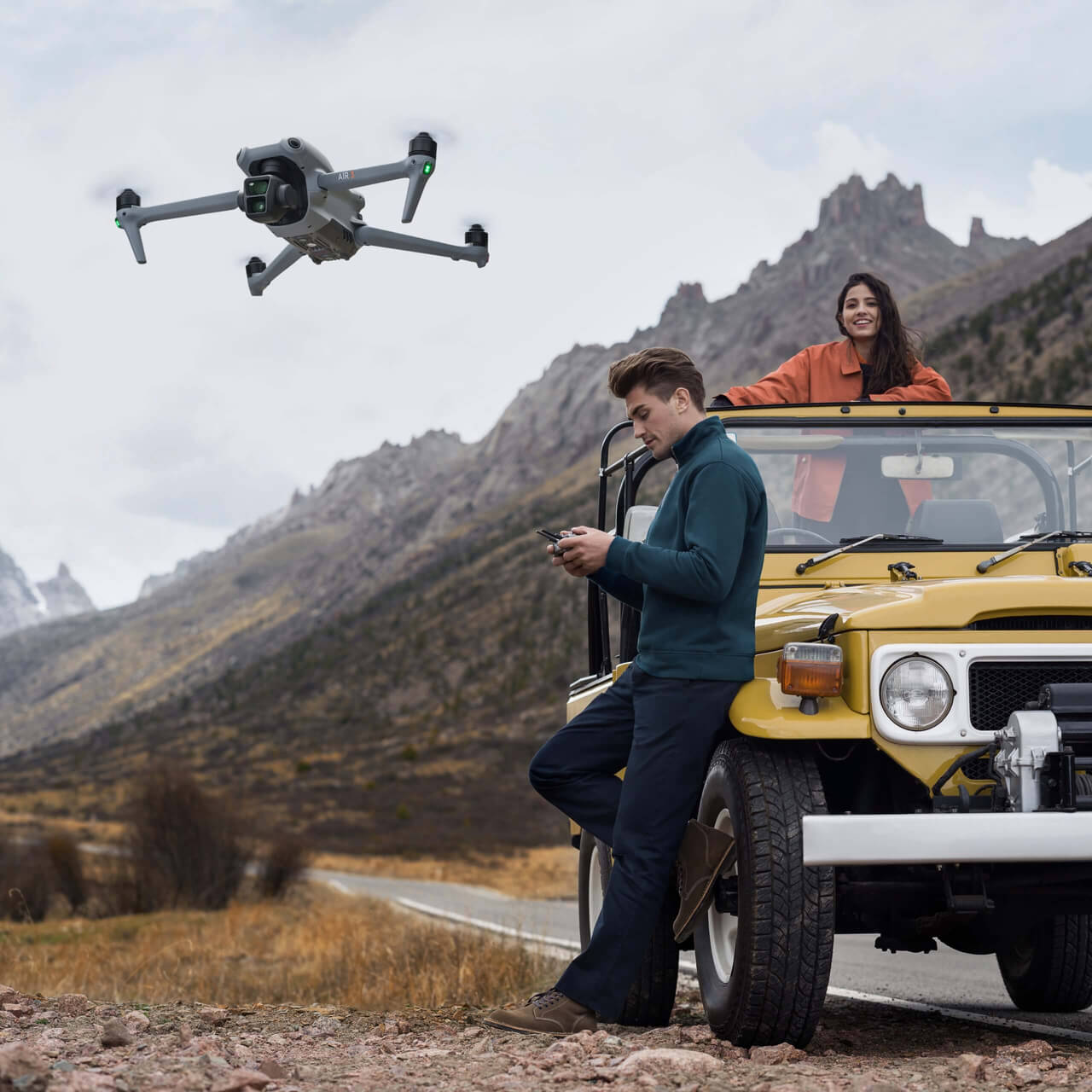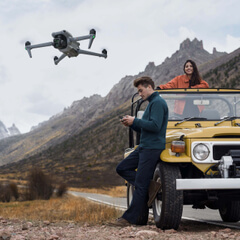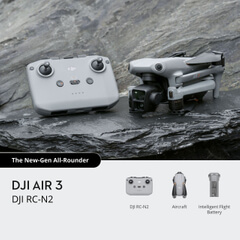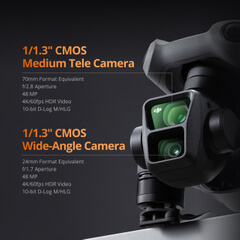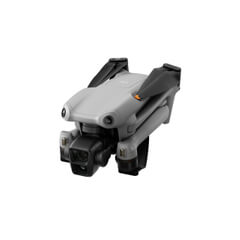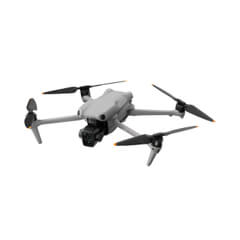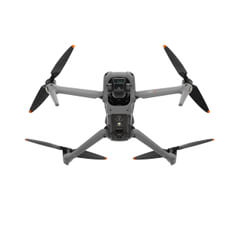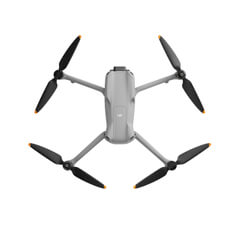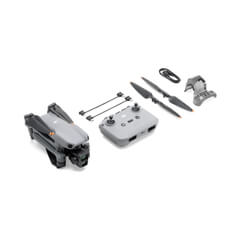DJI Air 3 (DJI RC-N2)
Select Option
Don't Miss Top Accessories
Take a Closer Look
Complementary Camera Performance
The 1/1.3-inch-CMOS wide-angle camera and 3x medium tele camera deliver consistent image quality [1] and more dynamic imaging possibilities.
46-Min Max Flight Time
Air 3's 46-minute flight time [3] is a 48% increase. [2] The battery charging hub also allows power transfer among batteries. [4]
Dual-Camera 48MP Photos
Both cameras can deliver 48MP photos filled with true-to-life details that look great and allow seamless cropping in post for those who need it.
4K/60fps HDR Videos
The two 1/1.3-inch CMOS sensors support dual native ISO for 4K/60fps HDR videos without cropping, providing rich, natural-looking results.
Omnidirectional Obstacle Sensing
Air 3 can detect obstacles in all directions [5] and can use APAS 5.0 to perform smoother avoidance [6] for a safer overall flight experience.
O4 HD Video Transmission
The next-gen O4 video transmission provides a max range of 20 km [7] with increased stability, and a 1080p/60fps max-quality live feed.
In the Box
DJI Air 3
× 1
DJI RC-N2 Remote Controller
× 1
DJI Air 3 Intelligent Flight Battery
× 1
DJI Air 3 Low-Noise Propellers (Pair)
× 3
DJI Air 3 Gimbal Protector
× 1
Type-C to Type-C Cable
× 1
DJI RC-N2 RC Cable (USB-C Connector)
× 1
DJI RC-N2 RC Cable (Lightning Connector)
× 1
Moments By You
Which is the Best for You?
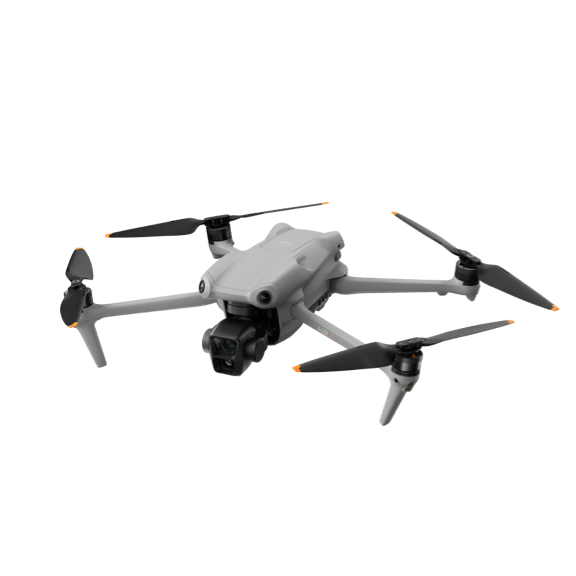
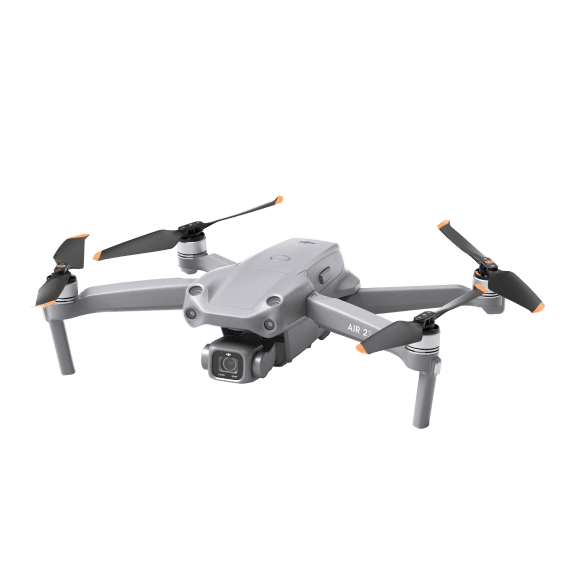
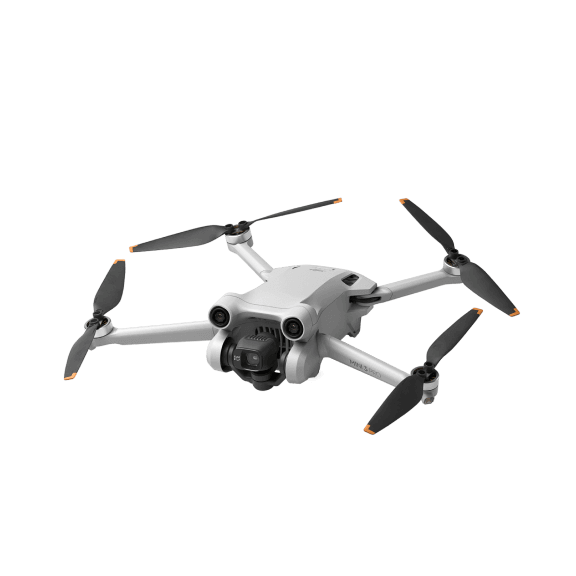
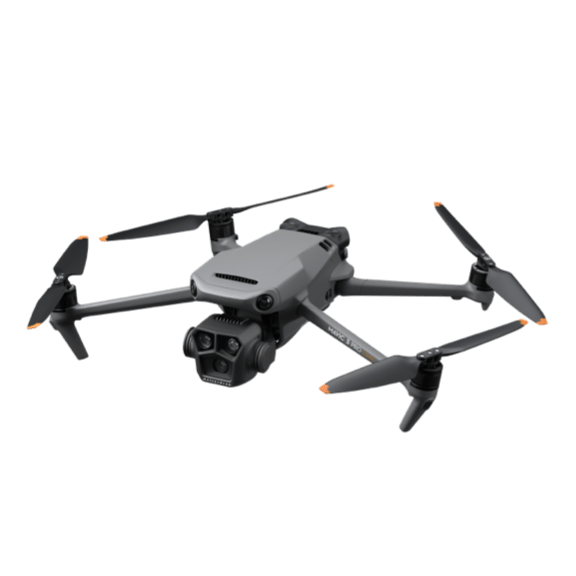
From HKD $1,099
From HKD $799
From HKD $759
From HKD $2,199
 1/1.3″ CMOS Wide-Angle Camera 1/1.3″ CMOS 3x Medium Tele Camera
1/1.3″ CMOS Wide-Angle Camera 1/1.3″ CMOS 3x Medium Tele Camera 1'' CMOS
1'' CMOS 1/1.3'' CMOS
1/1.3'' CMOS 4/3 CMOS Hasselblad Camera1/1.3″ CMOS Medium Tele Camera1/2″ CMOS Tele Camera
4/3 CMOS Hasselblad Camera1/1.3″ CMOS Medium Tele Camera1/2″ CMOS Tele Camera4K/100fps Slow Motion
4K/60fps
4K/60fps
Medium Tele/Tele Camera: 4K/60fps
Medium Tele Camera: D-Log M/HLG/Normal
Tele Camera: D-Log M/HLG/Normal
 Omnidirectional Obstacle Sensing
Omnidirectional Obstacle Sensing Obstacle Sensing in 4 Directions
Obstacle Sensing in 4 Directions Tri-Directional Obstacle Sensing
Tri-Directional Obstacle Sensing Omnidirectional Obstacle Sensing
Omnidirectional Obstacle Sensing DJI O4 20km
DJI O4 20km1080p/60fps Transmission
 DJI O3 12km
DJI O3 12km1080p/30fps Transmission
 DJI O3 12km
DJI O3 12km1080p/30fps Transmission
 DJI O3+ 15km,
DJI O3+ 15km, 1080p/60fps Transmission
 Max Takeoff Altitude
Max Takeoff Altitude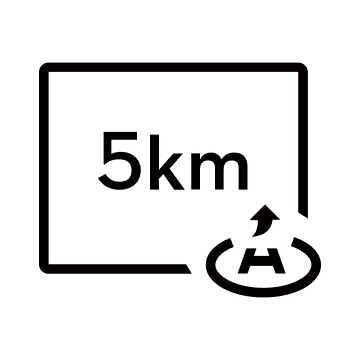 Max Takeoff Altitude
Max Takeoff Altitude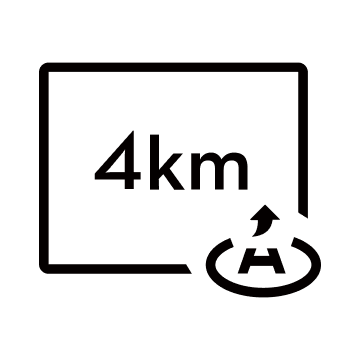 Max Takeoff Altitude
Max Takeoff Altitude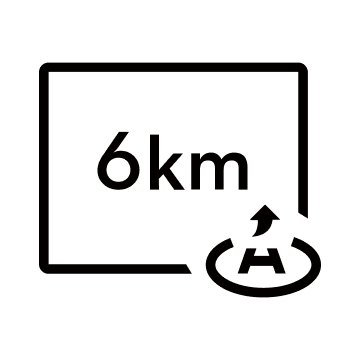 Max Takeoff Altitude
Max Takeoff AltitudeLet’s Answer Your Questions
Compared with DJI Air 2S, what are the main upgrades of DJI Air 3?
DJI Air 3 has improved the camera system, video transmission system, vision sensing system, flight time, and intelligent features. Details are as follows:
1. A 1/1.3-inch CMOS 70mm medium tele camera has been added to complement the 1/1.3-inch CMOS 24mm wide-angle camera, delivering consistent image quality* and more dynamic imaging possibilities.
2. The video transmission system has been upgraded to the next-gen O4 HD video transmission system, which not only delivers an FHD video transmission from a max range of 20 km, but also features enhanced anti-interference capabilities, further improving the transmission stability. The remote controller also supports a 1080p/60fps max real-time live feed, with the higher frame rate delivering a smoother viewing experience.
3. Equipped with an omnidirectional vision sensing system, the drone can detect obstacles in all directions. When obstacles are detected, the drone can use APAS 5.0 to perform smoother avoidance movements for a safer overall flight experience.
4. The max hovering time and the max flight time are 42 minutes and 46 minutes respectively, which are 40% and 48% higher than those of DJI Air 2S respectively, allowing you to create with peace of mind.
5. The drone supports Waypoint Flight, Advanced RTH, Cruise Control, QuickTransfer, and other intelligent functions, greatly improving creative efficiency.
* The wide-angle camera and medium tele camera have different apertures.
Compared with the O3 video transmission system, what are the upgrades of the O4 video transmission system?
The O4 video transmission system adopts an all-new hardware solution. The aircraft antenna system is upgraded from four antennas to six, and a new frequency band* has been added. The communication algorithm has also been upgraded, which not only delivers an FHD video transmission from a max range of 20 km**, but also features enhanced anti-interference capabilities, further improving the transmission stability in complex environments like urban settings. The remote controller also supports a 1080p/60fps max real-time live feed, with the higher frame rate delivering a smoother viewing experience.
* Can be used only in countries and regions where it is allowed by local laws and regulations.
** Measured in an open outdoor environment without interference and with FCC compliance. The above data shows the farthest communication range for one-way, non-return flights. Always pay attention to reminders in the app during your flight.
Compared with DJI RC-N2, what are the advantages of DJI RC 2? How should I choose?
When using DJI RC-N2, you need to connect your smartphone and download the DJI Fly app. DJI RC 2 comes with a 5.5-inch 1080p FHD screen with a brightness of up to 700 nits, delivering a better outdoor viewing experience. Additionally, with the DJI Fly app pre-installed, you can enjoy immediate use after powering on without connecting to your smartphone, facilitating concentrated and efficient creation.
Compared with the DJI RC-N1 Remote Controller, what are the upgrades of the DJI RC-N2 Remote Controller?
The video transmission solution has been upgraded, and the antenna system is upgraded from 1T2R to 2T2R. With DJI Air 3, the O4 video transmission can be used.
Compared with DJI RC, what are the upgrades of DJI RC 2?
The performance of the processor is improved for smoother operation. The video transmission solution has been upgraded, and the antenna system has been upgraded from 1T2R to 2T4R. With DJI Air 3, O4 video transmission can be used. DJI RC 2 features two built-in antennas and two external antennas, and also allows angle adjustments for the external dual antennas to achieve better video transmission effects.
How is ActiveTrack 5.0 different from ActiveTrack 4.0?
ActiveTrack 5.0 can track subjects in eight directions, enabling more creative possibilities. Embedded with advanced subject recognition technology, ActiveTrack 5.0 uses multiple vision sensors simultaneously to recognize a subject, differentiate it from other objects, and lock the subject in the frame. It allows you to adjust tracking angles smoothly for more natural results. Thanks to the new environment and subject-sensing algorithms, DJI Air 3 responds earlier to subject movements and environmental information and plans an optimal tracking route to record smooth and stable footage.
Does DJI Air 3 support vertical shooting?
Both the wide-angle camera and medium tele camera support vertical shooting (9:16), and the max shooting specification is 2.7K/60fps.
Does DJI Air 3 support shooting D-Log M and HLG videos?
Both the wide-angle camera and medium tele camera support shooting 10-bit D-Log M and 10-bit HLG videos. 10-bit D-Log M mode facilitates more flexible color grading in post-production, and 10-bit HLG mode can achieve previews with higher dynamic range (requires equipment that supports HDR display).
Still have questions? Get help from a DJI expert.
1. The wide-angle camera and 3x medium tele camera have different apertures.
2. Compared with DJI Air 2S.
3. Measured with DJI Air 3 flying at a constant speed of 28.8 kph in a windless environment at sea level, with APAS off, AirSense off, camera parameters set to 1080p/24fps, video mode off, and from 100% battery level until 0%. Data is for reference only. Always pay attention to reminders in the app during flight.
4. The power accumulation function can transfer the remaining power from multiple batteries to the battery with the highest remaining power. DO NOT connect the charger, connect external devices, or insert/remove any batteries when using this function.
5. DO NOT use the aircraft in severe weather conditions, including heavy wind exceeding 12 m/s, snow, rain, fog, hail, or lightning. DO NOT fly the aircraft 6,000 m (19,685 ft.) or higher above sea level. DO NOT fly the aircraft in environments where the temperature is below -10° C (14° F) or above 40° C (104° F). DO NOT take off from moving objects such as cars or boats. DO NOT fly close to reflective surfaces such as water or snow. Otherwise, the vision system may not work correctly. When the GNSS signal is weak, fly the aircraft in environments with good lighting and visibility. Low ambient light may cause the vision system to function abnormally. DO NOT fly near areas with magnetic or radio interference. Familiar magnetic or radio interference sources include Wi-Fi hotspots, routers, Bluetooth devices, high-voltage lines, large-scale power transmission stations, radar stations, mobile base stations, and broadcasting towers. Avoid sand entering the aircraft when taking off in desert or beach areas. Fly the aircraft in open areas away from crowds. Buildings, mountains, and trees may block the GNSS signal and affect the onboard compass.
6. The obstacle avoidance action should be set to Bypass in the app.
7. Measured in an outdoor, open environment, without interference, and with FCC compliance. The above data shows the farthest communication range for one-way, non-return flights. Always pay attention to reminders in the app during your flight.
